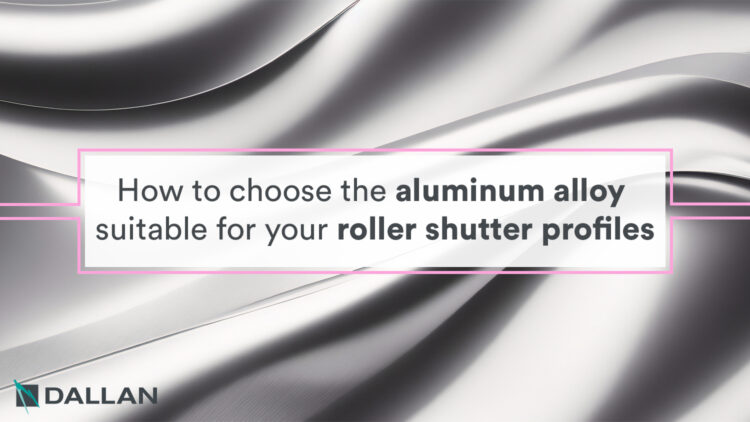How to choose the right aluminum alloy for your roller shutter profiles

Roller shutter profiles are mainly made of pre-painted aluminum, although a small percentage is still produced in steel.
In the early days (we’re talking about the 1980s), the thickness of the aluminum could reach up to 0.4mm.
However, in the last twenty years, increasing competition has led manufacturers to progressively reduce the thickness of the material and also the width of the strip to make the same type of profile.
Today, in some markets, profiles are made with materials starting from 0.2mm plus the coating.
In some cases even thinner, because some manufacturers are using material from 0.16mm, but these profiles are considered of very low quality, so we do not recommend choosing this path.
The total thickness is given by the thickness of the base aluminum, plus the coating which ranges from 2 to 3 tenths of a millimeter.
The inside of the profile is coated with a primer that ensures the foam grips onto the profile.
The exterior side has the final color of the roller shutter.
There are hundreds of colors, paints, and finishes, including special finishes like wood tint.
The profiling process occurs without any protective film, so the paint must have sufficient abrasion resistance, as regulated by the EN 13523 standard.
Considering the function of the roller shutter and the fact that it is a profile that needs to move and articulate the correct movement throughout the life of the product, the aluminum must have precise characteristics.
In this case, we refer to the EN 1396 standard.
The alloys we recommend are normally 3105 and 3005, both with a hardness of 46.
Both of these materials have good formability and resistance at the same time, and allow a good adjustment of the profile.
In recent years, alloy 5006 is also being used, in this case with a hardness of 48.
Even though they have the same definition, within the same alloy there can be batches of materials with slightly different characteristics during forming.
As a basic rule, we suggest sourcing material from one or at most two primary suppliers: the more we work with material of constant quality, the easier it will be to ensure the quality of the finished product.
If you need more information about this topic, don’t hesitate and contact us clicking on the button here below:
CONTACT US
![]()
Andrea Dallan
CEO – Dallan Spa
